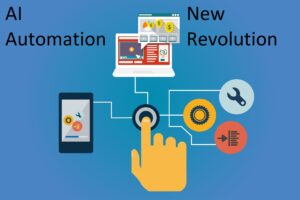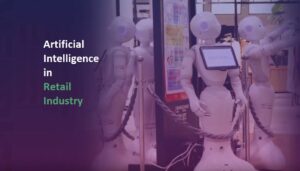Technology is often regarded as a solution to address existing needs, but it can also be the reason why new needs emerge. There is nothing unusual about this. Technological advancements are a part of the natural progression of things in the modern world.
Sometimes, technology even creates more problems than it solves. As a pew research study about tech’s impact on social and civic life reveals, some respondents believe the remedies introduced by technology may produce a new set of challenges. However, these less-than-desirable consequences of technological applications will not be the focus of the discussion here.
“Technology can result in the creation of new business needs that are not necessarily onerous, adverse, or counteractive to the benefits technology provides.”
These new needs are arguably beneficial to consumers, employees, and businesses in general.
Web Accessibility
One of the most important new business needs in the advent of the widespread use of web-enabled devices is web accessibility. As internet penetration accelerates, it becomes easier to own computers and web-connected mobile devices. Access to the internet thus ceases to be a privilege and becomes more of a right. In fact, the united nations declared internet access as a human right around a decade ago.
Because of the recognition that access to the internet is a right, businesses are compelled to ensure web accessibility for people who have various forms of disabilities.
According to the World Bank, there are around a billion people who suffer from some form of disability ranging from blindness to deafness and locomotory limitations.
To help ensure web accessibility, the web content accessibility guidelines (WCAG) was established. Governments, in response, introduced legislation in accordance to WCAG plus other requirements. The United States, for example, has Title III for the Americans with Disabilities Act to cover the need for web accessibility.
The European Union has a web accessibility directive. Businesses that serve customers in these territories will have to make sure they abide by the legal requirements for ensuring web accessibility. Otherwise, they will be facing fines and other penalties or sanctions.
As businesses see the ease in and benefit of having a web presence—thanks to advances in website building and broader internet penetration—they also face the new need of making sure that their websites or online stores are web-accessible. They have to ascertain that they are able to serve those who are differently-abled or those who have inadequacies in their sight, hearing, or motor skills.
Conventional methods of converting existing sites into web-accessible ones are tedious and costly. They entail a manual evaluation of all pages and the implementation of adjustments or changes page by page. However, the good news is that it is also possible to achieve web accessibility for virtually all kinds of websites or online platforms through the advent rise of AI-driven web accessibility solutions.
These convenient accessibility services will automate the process of making a website compliant with accessibility requirements as per WCAG, ADA, EAA/EN 301549, and other relevant regulations without major manual changes or code overhaul.
Security and Privacy Protection
Another need largely driven by the prominent use of web-connected devices, including smartphones and other gadgets capable of recording photos and videos, is enhanced security. Businesses cannot settle with just an antivirus protecting their computers and networks.
As more people go online, the risks of cyber attacks multiply. Companies need to invest in adequate security solutions. They have to be mindful of their access controls especially with policies such as BYOD and work-from-home. There has to be a sound policy and secure technical regulation of network access granted to employee devices.
Numerous cyber risks threaten businesses. DDoS can strike a company’s store or website and create a disruption that results in lost revenues and damaged business reputation. Data theft and ransomware can take away vital business data and imperil projects and business relationships. Likewise, social engineering can lead to various unwanted outcomes, ranging from the embarrassing to the expense or loss-inducing.
The popular use and improved reliability of the internet may have allowed businesses to take advantage of e-commerce and remote work arrangements, but it has also created new challenges businesses cannot simply ignore. Of note, the International Monetary Fund already recognizes cyber risk as a new threat to financial stability.
It is not necessary to establish an IT department with a dedicated cybersecurity team. Many SaaS solutions make it possible to bolster enterprise security and privacy without having to invest in advanced equipment and hire more security professionals. Coupled with proper employee training, companies can have sufficient security and privacy protection.
Upskilling
Automation and artificial intelligence are two technological achievements that are often associated with negative outcomes. In particular, they are linked to job losses or retrenchment as they introduce “smart” machines capable of taking over jobs for humans.
The fear of AI and automation is often exaggerated, though. As AI expert puneet mehta shared in a forbes piece: “The panic based on the notion that artificial intelligence (AI) is taking away all of our jobs might be, well … artificial.”
While it is true that humans are bound to lose some jobs, more opportunities will be created along the way. These employment opportunities will not appear immediately, but in the long run, industries will change and create new business models that necessitate human workers. A PwC paper notes that AI will generate as many jobs as it displaces. In the UK, for example, PwC says more than 7.2 million jobs will be created as AI boosts the economy.
The right response for people and businesses is upskilling. People will have to adjust by improving their skills to take on other jobs machines are unable to handle. In the same vein, employers will have to help the employees gain new skills as it becomes inevitable for them to be laid off in favour of automation.
The Takeaway
Changes are inescapable as societies and industries progress.
The rise of artificial intelligence and the adoption of new technologies can pave the way for new needs that will in turn be addressed by the development of new technologies. Nobody has the luxury to complain. The logical response is always to adapt and innovate or invent new solutions to keep going.










